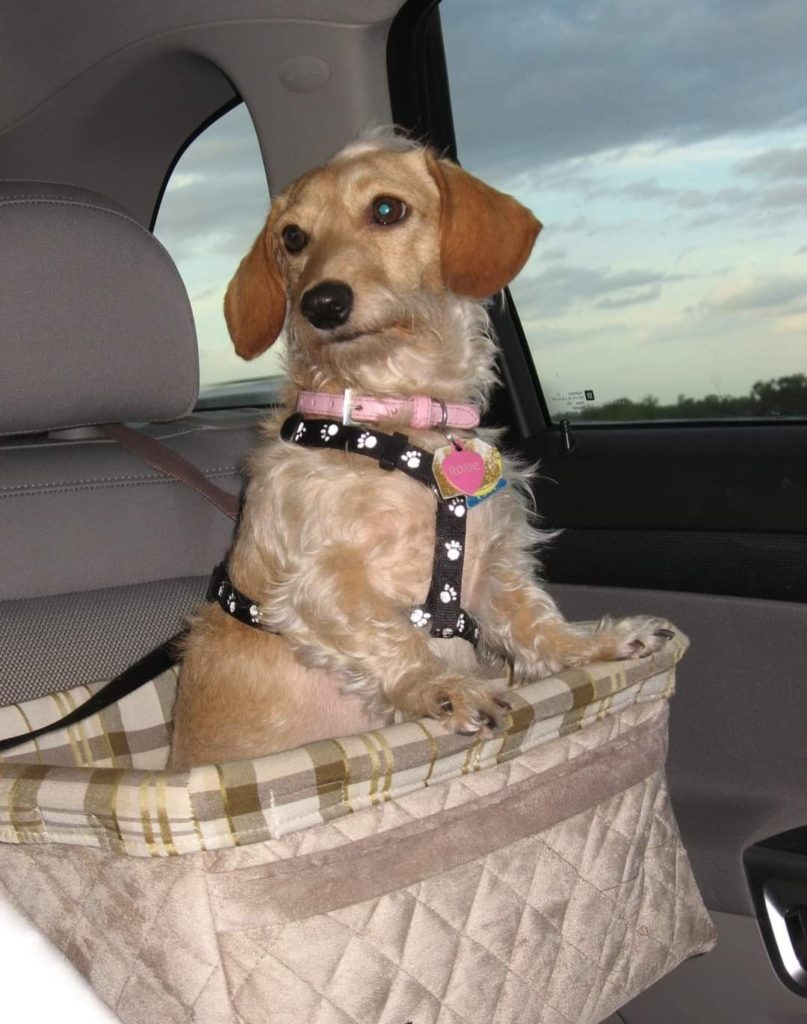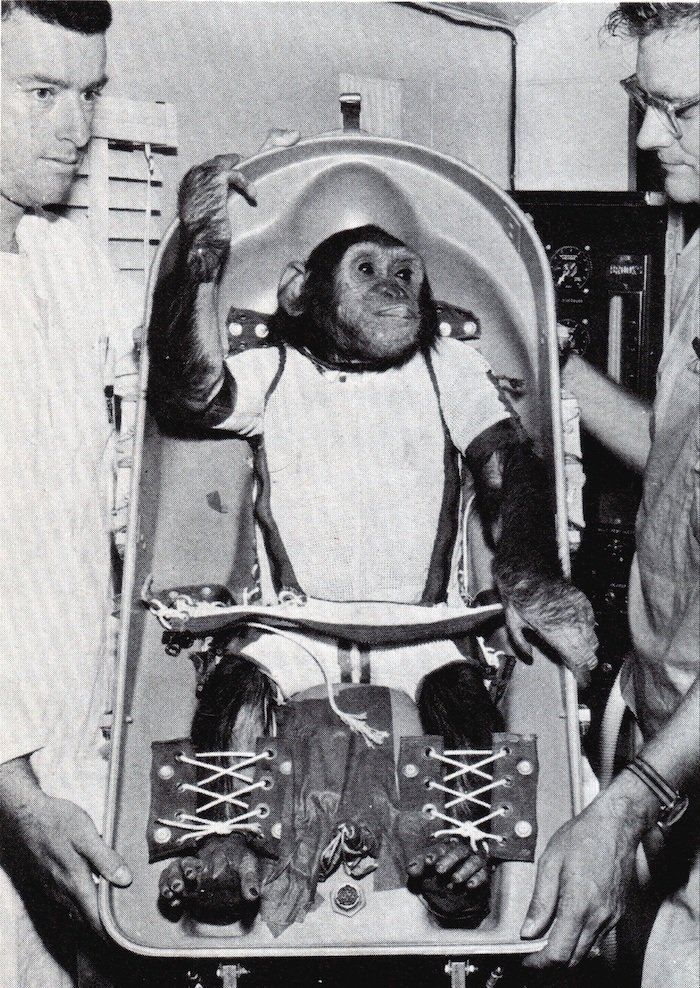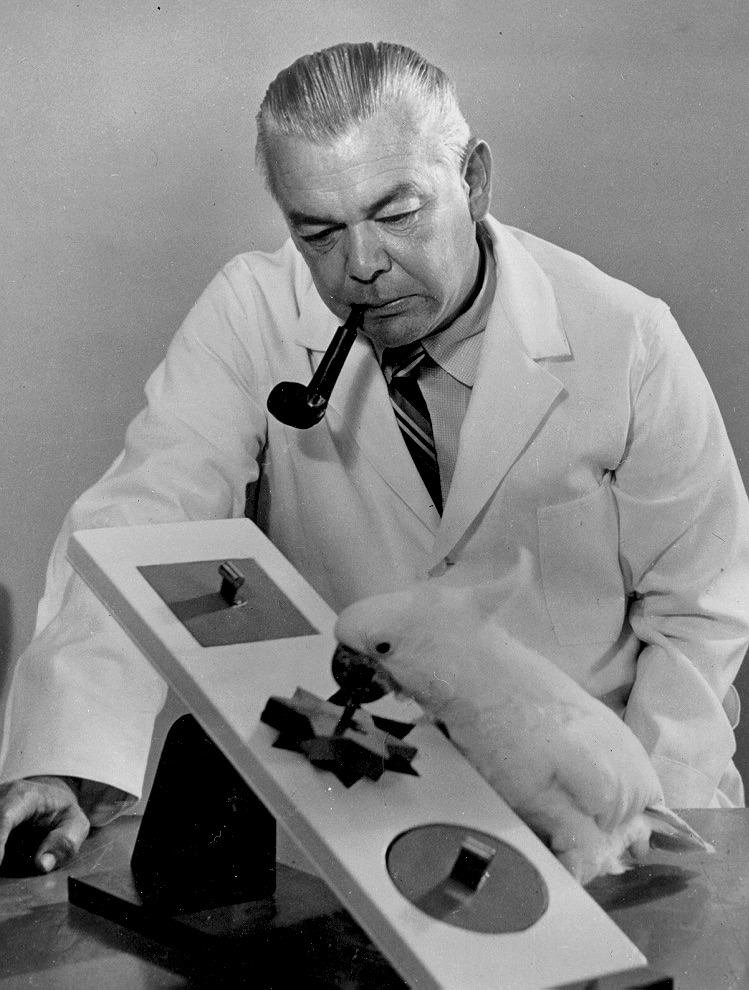In which areas of life does your pet have “agency”?
In social science, agency is defined as “the capacity of individuals to act independently and to make their own free choices.”
Of course, it would be irresponsible to have dogs and cats living in a human world and give them carte blanche to do as they please. That wouldn’t be safe for them or for other humans in the world, and your carpets would certainly suffer. However, using positive reinforcement to train them is just the beginning. Pets respond beautifully to being given the choice to participate in the silly games people play.
Start with Simple, Necessary Behaviors
One basic need of most dogs is riding in the car for regular visits to the veterinarian. Some dogs visit groomers, too. There are lots of fun places your dog can go if they know how to ride comfortably in the car. Riding in cars requires a set of skills that some dogs seem to gain quickly. Others need extra training help.

The Building Blocks of Riding in the Car
You may want to put your dog in a car seat or buckle a harness into a seat belt for safety in the car. There’s a lot for your dog to learn to be successful with this process, though humans take riding in cars for granted.
Your dog needs to learn to get into the car seat, be still while you buckle him in, and understand how he can sit or lie down to be comfortable while riding, within the limitations of the car seat or seat belt.
Even if you just want your dog to ride on the back seat while you drive, some training ahead of time is helpful to teach him to stay there instead of leaping into the front seat and onto your lap.
Your dog needs to be comfortable riding in the car with the engine and road noise, bumps and vibrations, and also with some rare situations like slamming the brakes on, rainy weather, etc. These are the building blocks that you can teach your dog to be comfortable with, one at a time. Remember that every experience he has in the car helps build his next ride, which has a big effect on the quality of your own experience. Animal agency, or choice, builds great experiences for you and your pet.

Teaching 1 Building Block at a Time
Some dogs will quickly and easily learn to ride in the car and you won’t have to break it down into all these building blocks. Other dogs will be more sensitive and may have trouble with some of the steps. You have the power to help your dog learn to ride comfortably in the car. Isolate each step and teach him to happily participate in the process.
Teach the car seat behavior in your home, maybe on the couch, before adding that building block to all the sensations of riding in the car. Teach your dog to relax in a crate in the house before putting the crate in the car. Sitting in a car seat or a crate, or in a particular spot in the car, is really similar to “mat training”. Teach your dog to “be” in position for brief periods of time with lots of treats for reinforcements. Use a release cue like “That’s all!” to get him to hop out of the car seat. Then extend the behavior to longer periods of time before releasing him. You can be working on introducing your dog to the car itself in separate training sessions.

The Car Itself: Skills = Ability to Choose
You may need to do some classical conditioning with the car before working the car seat or seat belt harness into the picture. Cars are a weird contraption to get into, they have distinct odors, they vibrate, and they make noise. Introduce each of these sensations separately – first the quiet car in the garage, then you might sit in the back seat with the dog and feed your dog treats with the car running.
If your dog tends to get carsick and throw up, help him work through that with short sessions as the car idles. When he’s calm for those sessions, back out and pull forward again – then get out of the car. The tiniest, shortest trips will help your dog learn to be calm and relaxed during a longer ride.
If you have two cars, take the time to introduce him to both – they offer different experiences. A good time in one will help develop a good experience in the other, but won’t generalize automatically.
Watch for Your Dog to Make the Choices you Like
When your dog starts volunteering to get in the car seat or crate, and is having good experiences associated with the car, start putting them together. Your dog will let you know when he is ready, and it may happen really fast! Be sure to prepare him to have a great experience; the stress of a bad experience in the car might cause him to hate cars forever.
Enos, The Space Chimp
Speaking of teaching animals to ride in vehicles, check out this article about Enos, one of the early “space chimps” who did not have much agency or choice during his training or his space flight. It was the inspiration for this article. Read on.

Animal Behavior Enterprises
Pet owners are required to have some control over their animals, for the safety of animals and humans. However, by giving pets some choices, you can get everything you need from them with their cooperation.
In contrast to Enos’ experiences, consider Animal Behavior Enterprises, the animal training company started by Keller and Marian Breland which completed its 50-year run under Bob and Marian Bailey. Their many species of animals voluntarily performed tricks used in shows around the world. Food deprivation was not necessary or sanctioned at ABE. They were not shocked. The animals often did their behaviors off-leash and free in a performance area, where they could truly have walked away or done things other than the desired behaviors, but they didn’t. Find out more about ABE here: https://www.uakron.edu/chp/abe/the-iq-zoo/animal-behavior-enterprises.dot

Malfunctions and Choices
The combination of shock and food rewards in Enos’ training was unnecessary and resulted in horrific pain for him during the flight due to malfunction of the shock mechanism NASA sent with him into orbit. Who would have thought? That poor chimp kept doing the correct behaviors and got shocked anyway. In his initial training, he learned that performing the correct behavior prevented him from getting shocked; not so during the flight. He endured psychological damage for the rest of his life due to this stressful experience.
Of course, if no shock mechanism had been used in his training, it wouldn’t have been on the flight with him so it wouldn’t have been able to malfunction. Would it have been possible to train Enos without shocking him? Without a doubt, yes. Refer to the work of Animal Behavior Enterprises above, and there’s an even more closely-related example from the world of positive reinforcement training.
If you don’t already know about it, check out Dr. B.F. Skinner’s work on the Pelican Project, in which pigeons were trained to peck targets to guide a missile, using positive reinforcement and no punishers.
These pigeons had limited agency in comparison with the animals trained by ABE, but at least they weren’t getting shocked if they didn’t peck the target. Agency is not an “all or none” proposition. There are degrees of freedom to consider, based on the specific situations of the animal or human making the choices, as discussed above. If you want to dive deep into the concept of agency, see the synopsis of Dr. Joe Layng’s presentation “Coercion without Aversive Stimuli” at the Art and Science of Animal Training Conference, 2020. )
The Power of Positive Reinforcement
The Pelican Project and the Brelands’ and the Baileys’ work at ABE documents the power of positive reinforcement in building duration of behaviors without physical punishers. It’s just not necessary to use pain to get animals to do what you want them to do. Provide a good experience with each step of training so your dog voluntarily participates and can’t wait to do it the next time. Check out our blog post on “Life Skills” for a few more important skill sets that will help your dog be comfortable and ready to participate in the activities required of him.


